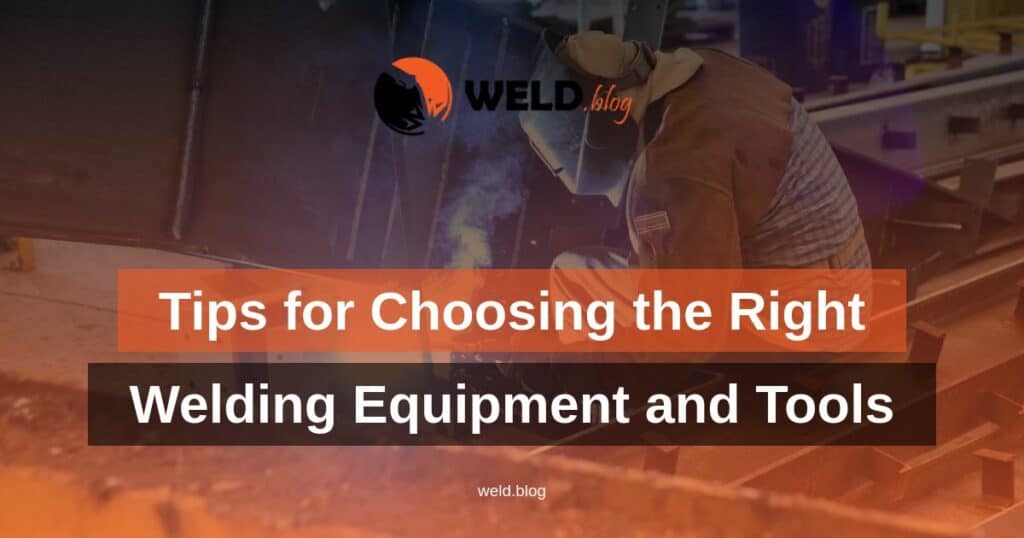When it comes to welding, choosing the right equipment and tools is essential to ensure that the job is done correctly and safely. With so many options available in the market, it can be challenging to pick the ideal equipment and tools. In this blog, we have compiled a list of tips to help you make the right decision.
1. Identify Your Requirements
Before you start looking for welding equipment, it is important to identify your needs. Determine the nature of the tasks you will be using the equipment for and the type of welding that you will be doing. This can help you narrow down your search for the right equipment and tools.
2. Consider Quality and Durability
Quality and durability are crucial when it comes to welding equipment and tools. Invest in high-quality equipment and tools that can withstand long hours of use. Buying low-quality equipment may be cheaper initially, but it may mean that you will have to replace it often, which can cost you more in the long run.
3. Look for User-Friendly Equipment and Tools
Welding can be a challenging task, and the last thing you need is to struggle with complex equipment and tools. Choose equipment that is easy to use and that has ergonomic features to ensure that you are comfortable while working. It should also be easy to clean and maintain.
4. Check for Safety Features
Welding can be hazardous if the right safety precautions are not in place. Look for equipment and tools that have safety features such as automatic shut off, thermal overload protection, or safety guards. This can help prevent accidents and protect you and your team.
5. Consider the Power Requirements
Welding equipment requires a significant amount of power to function. Check for power requirements to ensure that you have adequate power supply to operate the equipment. This can help prevent equipment damage and ensure that the task is complete quickly and efficiently.
6. Look for Compatibility with Accessories
Welding equipment often requires additional accessories such as nozzles, tips, and electrodes. Ensure that the equipment is compatible with accessories from the same manufacturer or that you can easily obtain compatible accessories in the market.
7. Shop Around for the Best Price
Welding equipment can be costly, but it is important not to compromise quality for cost. Shop around for the best price without compromising the quality of the equipment. Look for deals and discounts that may be available to save you some money.
Choosing the Right Welding Tools
It is just as important to have the right welding tools as it is to have the correct welding equipment. Here are some tips to help you make the right choice:
1. Consider the Type of Welding
There are various welding techniques such as MIG, TIG, Flux-cored, and Stick welding, among others. Each technique requires specific tools. Ensure that you choose the appropriate tools for the type of welding that you will be doing.
2. Look for Durability
Welding tools are subjected to significant levels of stress due to high temperatures and heavy use. Choose high-quality tools that are durable and can withstand long hours of use without breaking down.
3. Ensure Compatibility
Ensure that the tools are compatible with the welding equipment and accessories that you currently use or intend to use. Compatibility can save you time and money in the long run.
4. Check for Ergonomics
Welding can be a challenging task, and the tools that you choose should be easy to handle and comfortable to use. Look for tools that have ergonomic features such as rubberized handles to ensure a secure grip.
5. Invest in High-Quality Accessories
Accessories such as welding clamps, magnets, and hammers are essential to complete welding tasks. Invest in high-quality accessories that can withstand frequent use without breaking down.
Choosing the right welding equipment and tools can help you complete welding tasks quickly, efficiently, and safely. It is essential to invest in high-quality equipment and tools that are durable, user-friendly, and equipped with safety features. Ensure that you identify your requirements and consider factors such as power requirements, compatibility, and ergonomics, among others. With the tips provided, you can select the best welding equipment and tools that suit your needs and budget.

